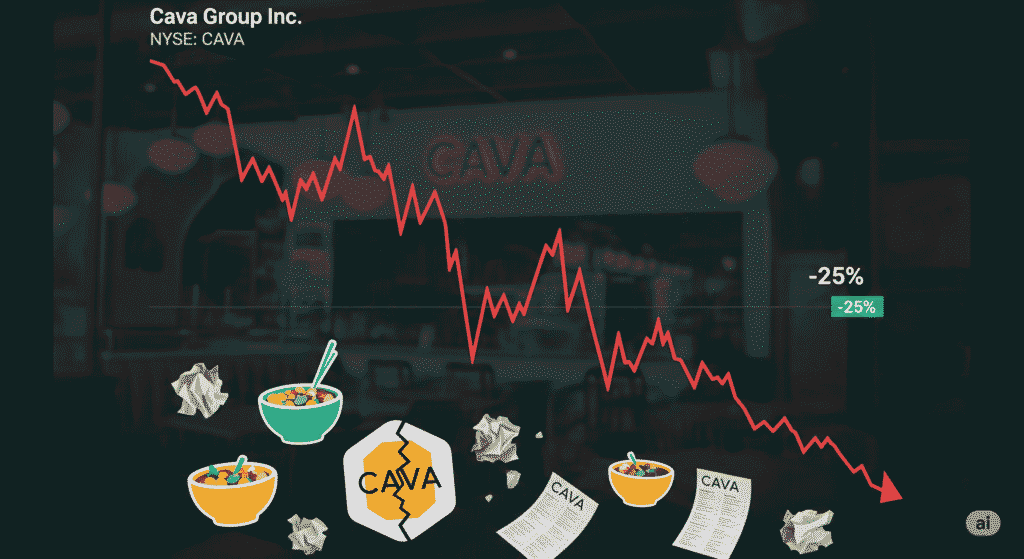Trump’s 401(k) Order Lets Savers Hold Crypto and Private Assets — But Expect Higher Fees and More Risk
Quick summary (read this first)
President Trump signed an executive order on August 7, 2025 directing federal agencies to move toward allowing 401(k) plans to include alternative assets — such as cryptocurrencies, private equity, private credit, and real estate — as potential investment options for plan participants. Proponents say this democratizes access to higher-return asset classes; critics warn that these investments often carry significantly higher fees, lower liquidity, valuation opacity, and legal complexity that could harm ordinary retirement savers if protections aren’t put in place first. The White HouseReuters
Why this matters now
For decades, defined-contribution retirement plans like 401(k)s have largely relied on publicly traded mutual funds, index funds, and ETFs — vehicles that are cheap, liquid, and easy for plan sponsors to offer. The new executive order is a clear policy pivot: it asks the Department of Labor (DOL) and the Securities and Exchange Commission (SEC) to reassess guidance and, where appropriate, rewrite rules so retirement plans can offer exposure to alternatives typically reserved for institutions or high-net-worth investors. That process is intended to begin quickly; the order asks regulators to examine and propose guidance within 180 days. The White House
Those administrative steps are directional, not instantaneous. Plans won’t overnight swap day-traded funds for illiquid private equity. But the move changes the shape of the conversation and opens a map for asset managers to build products targeted at retirement accounts.
Which assets are in scope?
The executive order uses broad language — “alternative assets” — and examples that include:
- Cryptocurrencies and crypto-native products (spot-based or fund wrappers)
- Private equity and private credit vehicles
- Real estate and infrastructure vehicles
- Commodities or other non-traded strategies
That list signals openness to a wide range of strategies, but regulators will have to define exactly which instruments are allowable for participant-directed 401(k) lineups and which belong only inside professionally managed, hybrid or target-date funds. Reuters
The upside the administration highlights
Supporters argue the change offers three principal benefits:
- Diversification: Private assets and some commodities have historically shown returns and risk profiles that don’t move in lockstep with the public equity market.
- Potential for higher long-term returns: Private equity and some real assets can produce higher long-term gains — in theory improving retirement outcomes for long-horizon investors.
- Democratization of access: For decades these assets were mostly available to pensions, endowments, and wealthy individuals; the order frames the change as giving everyday savers a chance at the upside.
Wall Street and alternative asset managers are already positioning products that mix public securities with private holdings — hybrid funds targeted at retirement plans. Proponents argue that with the right guardrails, these can be a sensible part of a diversified retirement portfolio. AxiosFinancial Times
The real and immediate risks (don’t skip this)
While the upside sounds attractive, the most important practical issues for savers are fees, liquidity, valuation, transparency, and legal risk.
Fees
Most mutual funds in 401(k) lineups charge very low expense ratios — industry averages for employer-sponsored plan funds are commonly a few tenths of a percent annually. By contrast, many alternatives use tiered or performance-based fee models (the classic private equity “2 and 20” fee structure), plus additional administrative charges. Those fee differences compound over decades and can meaningfully erode retirement outcomes. Reuters
Liquidity mismatch
401(k) systems are built around daily pricing and the ability for participants to move assets or receive statements with regular valuations. Private equity, private credit, and some real assets are illiquid by design — they can require lock-ups of years, have capital calls, and lack market prices. Translating such instruments into account balances that must be reported and, in some cases, convertible on request is operationally difficult.
Valuation opacity
Private investments are often marked using models rather than market trades. That produces smoother, lagged returns and makes it harder for participants to understand what’s really driving their gains or losses. Combined with complex fee layers, these valuations can hide true cost and performance.
Suitability & fiduciary complications
Fiduciaries — employers and plan administrators — must act in participants’ best interests under ERISA. Adding alternative assets raises tough questions about suitability, documentation, and potential legal exposure if outcomes disappoint. The EO explicitly instructs the DOL to consider calibrated “safe harbors” and to reduce litigation pressure, which shows officials understand these legal frictions will be a central issue. The White HouseDOL
How asset managers and plan sponsors are likely to respond
Large asset managers and private firms view this as a huge market opportunity: trillions of dollars sit in defined contribution plans in the U.S., and access to that pool has been limited. Expect a two-track response:
- Hybrid retirement products. Managers will design blended funds (public equities + a tranche of private assets) that try to preserve daily liquidity via “liquid sleeves” while offering private-asset exposure inside a pooled vehicle. These can be structured with staggered liquidity windows and complex NAV mechanisms.
- Targeted institutional solutions. Big corporate plans (especially mega-plans) that already have private asset exposure may expand their offerings to include dedicated alternatives windows for informed participants or managed accounts for high-savings employees.
But even managers who want to tap this market will face pressure to create products with clearer fees, improved transparency, and practical liquidity mechanics — or risk regulatory scrutiny and poor adoption by plan sponsors. Axios
A short, practical guide for savers (what to do now)
If you have a 401(k) or manage one for employees, here’s a practical checklist:
- Don’t rush in. These options will take months to appear in plans. Regulators will likely create guardrails; wait until you see the specifics.
- Keep a low-cost core. For most investors, a diversified core of low-fee index funds should remain the foundation of a retirement portfolio.
- Assess time horizon. Private investments suit long horizons. If you’re within 5–10 years of retirement, heavy allocations to illiquid, high-fee assets are risky.
- Ask questions of your plan sponsor: How will fees be disclosed? How will valuations be calculated? What is the liquidity mechanism? Who bears legal risk if something goes wrong?
- Consider a small, informed allocation only after you fully understand fees, lockups, and tax implications — and preferably after consulting a fiduciary or financial planner.
Numbers that make the choice concrete (table)
Below is a compact comparison you can paste into your editor. The numbers are generalized ranges meant to clarify magnitude rather than serve as exact product specs.
Fee & liquidity comparison (illustrative)
| Asset type | Typical fee structure | Liquidity | Typical investor access |
|---|---|---|---|
| Index mutual funds / ETFs | 0.03% – 0.7% (avg ~0.2–0.4%) | Daily | Widely available in 401(k) |
| Private equity | Management + carry (“2 and 20”) | Lockup years | Historically institutional |
| Real estate funds (non-REIT) | 1%–2% + performance fee | Limited / quarterly windows | Institutional / accredited |
| Crypto funds / token products | 0.5%–2% (varies) | Varies (some daily, some locked) | Emerging; regulatory variance |
| REITs (public) | ~0.5%–1.5% | Daily | Public markets / ETFs |
(Sources compiled from industry reporting and product literature; fees vary widely by manager and structure.) Reuters
Legal and litigation angle — why the order mentions safe harbors
The EO asks agencies to consider measures that will curb ERISA litigation that historically can chill plan sponsors from offering anything but the safest options. That language isn’t accidental: private markets have a long track record of costly litigation when investors allege mispriced or mismanaged products. Regulators can try to create safe harbors that, for example, protect sponsors who use approved vendor lists or pass strict disclosure tests — but these protections are not automatic and could be contested in court. Past legal fights over private allocations in corporate plans underscore how messy that path can be. Reuters
How markets reacted (the immediate signal)
Following the announcement, cryptocurrency prices and certain private-market proxies saw immediate moves: bitcoin and crypto-related ETFs ticked higher in intraday trading, and some asset managers publicly said they were building retirement-ready vehicles. That reaction underscores how policy changes alone can channel capital into favored sectors even before formal rules are in place. But markets can also misprice risks in the short term, which is why relying on liquidity or short-term trading in retirement accounts is dangerous. AxiosReuters
FAQs — explained (long-form answers)
Below are common questions readers ask. Rather than terse soundbites, each answer gives context and the practical meaning behind the question.
Q — Will my 401(k) suddenly allow me to buy Bitcoin?
Not immediately. The executive order directs agencies to examine and change guidance; but regulators must define permissible instruments, address custody and valuation issues, and create compliance rules before plan administrators will add crypto options. Any real-world rollout will take months and will likely be limited at first to specialized, pooled retirement products, not a simple “buy Bitcoin” button on your 401(k) dashboard.
Q — Why are people so worried about fees?
Because retirement savings compound over decades. A fee difference of even one percentage point per year, compounded over 30 or 40 years, can shave tens or hundreds of thousands of dollars from an account balance. Private asset fee structures often include base management fees and performance fees, which can create misaligned incentives and obscure the true cost to the end investor.
Q — Could adding alternatives actually help younger savers?
Potentially. Younger investors have longer time horizons and can tolerate illiquidity. Carefully structured alternative exposure (through low-cost, transparent sleeves) can improve diversification. But “potentially” is the operative word: the details—fees, transparency, and governance—will determine whether this is an advantage or a financial trap.
Q — Who bears the liability if an alternative investment in a 401(k) layers on losses?
Under ERISA the plan fiduciaries (e.g., plan committees, employer sponsors) bear fiduciary responsibilities. The executive order asks the DOL to consider safe harbors and to recalibrate fiduciary guidance, but any legal risk allocation will be driven by final rules, best practices and, if challenged, court decisions. Plan sponsors will likely insist on strong vendor due diligence, strict disclosures, and contract protections to mitigate risk.
What to watch next (timeline & markers)
- DOL guidance / proposal of rules: The EO gives the DOL a 180-day window to review and propose guidance or rules (so watch for guidance or NPRM filings). The White House
- SEC parallel actions: The SEC may alter rules around private funds and participant protections.
- Product launches: Expect major asset managers to announce retirement-focused hybrid funds.
- Plan sponsor pilots: Mega plans and some corporations may pilot limited options before broad rollouts.
- Litigation & legislative response: Watch both courts and Congress for pushback, clarifications, or constraints.
Bottom line
The executive order is a watershed: it opens the door, at the policy level, for alternative assets inside defined-contribution retirement vehicles. That prospect is exciting for some and alarming for others. The difference between a progressive expansion of options that helps savers and a rushed, opaque rollout that benefits fees-hungry intermediaries will come down to regulatory detail, product design, transparency and fiduciary discipline. Keep your core allocation simple, verify fees and liquidity before opting into anything new, and treat immediate market reactions as noise until regulators complete the technical work.
Want updates as regulators release rules and managers build products? Subscribe to Hancerz Insights for concise policy tracking, plain-English explainers, and step-by-step guidance you can actually use.
References (most important sources used for fact checks)
- White House fact sheet and Executive Order text. The White House
- Reuters analysis reporting on the order’s content and industry reaction. Reuters
- Associated Press / broad press coverage of the order and context. AP News
- Axios and industry reporting on product and market reaction. Axios
- DOL press release and commentary from the Secretary of Labor. DOL




